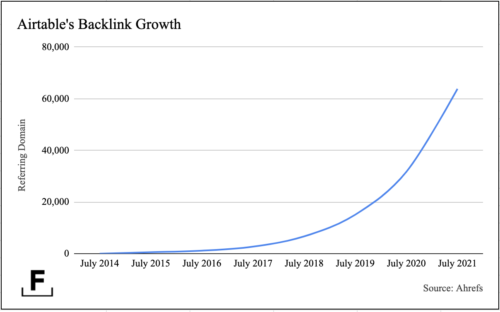Article's Content
Welcome to volume 43!
“With just four easy payments of $29.99, you can own not one, but two *insert infomercial product here*!”
If that is the first thing that comes to your mind when I say buy now, pay later, you haven’t heard of the $29B acquisition of AfterPay. Don’t worry if you aren’t familiar with the news; we’ve got you covered in this issue.
Before we get into that, here’s a peek at what’s to come:
- Square pays now for AfterPay
- B2C subscription services are undergoing SaaSification
- Ecommerce and SaaS companies are falling out of vogue with investors
Spread out around the globe, our trusted team works wherever they want to lay their Mac down.
We rely on video calls, communication tools and good ol’ fashioned trust to get things done daily. We take accountability for our deadlines while also taking ownership of our schedules. Our foundation is built on trusting our team.
If that sounds like a work environment you would thrive in, check out our job openings! We’d love to meet you.
Square Pays Now for “Buy Now, Pay Later” Company AfterPay
According to a 2017 investor deck, AfterPay was on track to become a $20+ billion Australian online retail presence, and by 2021 they have managed to exceed expectations.
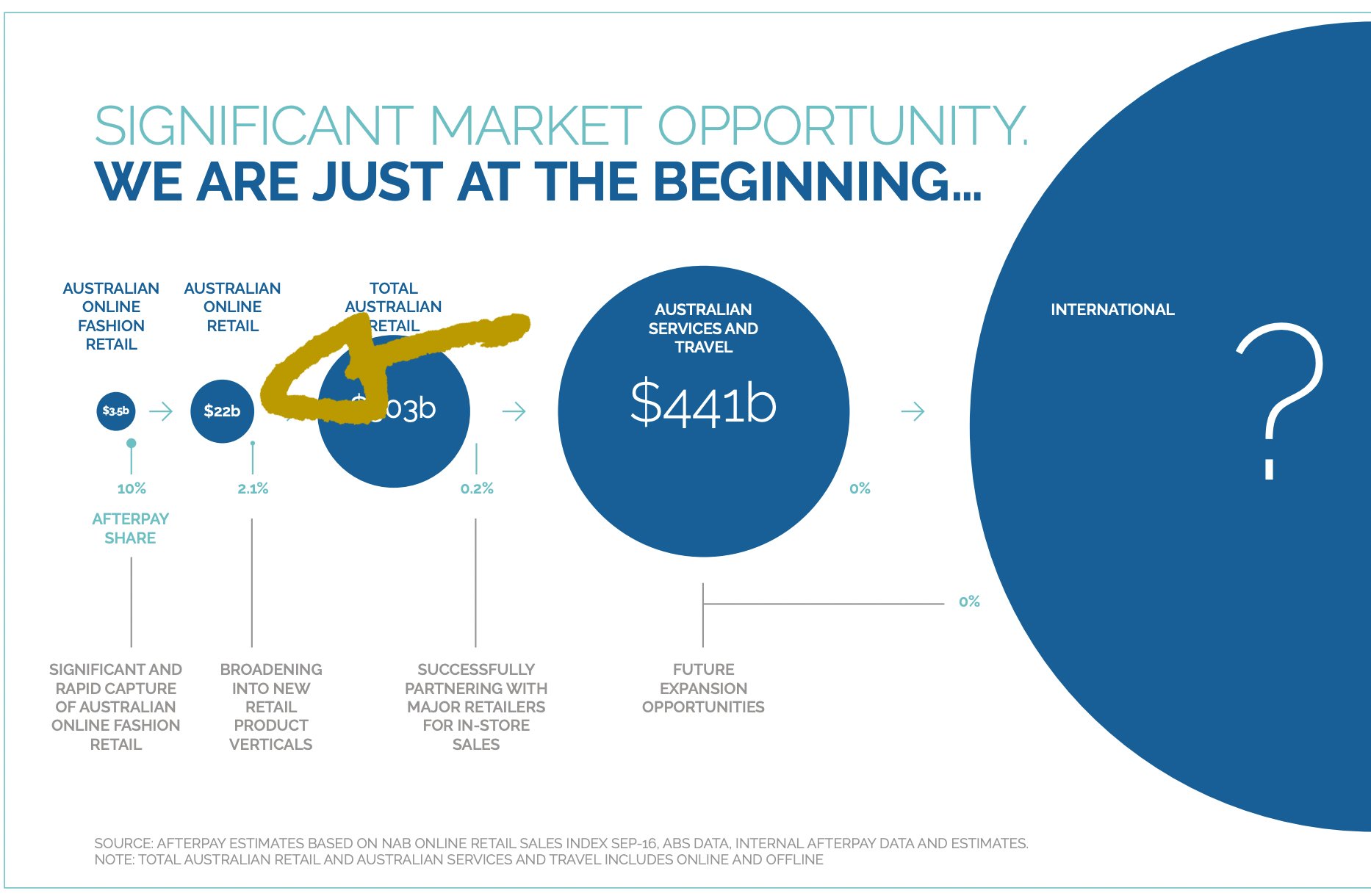
The goal to have a $22B Australian online presence was surpassed at the start of August when Square purchased the company for $29B in an all-stock deal. Let’s take a quick trip down memory lane and see how far AfterPay has come in just three years.
In 2017 when AfterPay presented the above pitch deck, they had:
- $480M in sales
- 450k customers
- 2,600 merchants
Three years later, in 2020, AfterPay has achieved outstanding growth with:
- $4.8B in sales
- 7.3M customers
- 43,200 merchants
This growth didn’t happen by chance. It happened through brand excellence and templated landing pages for location customization.
According to Ahref’s data, in August 2021, AfterPay is ranking on page one for 1.9K branded search terms. The branded search term “AfterPay” receives an estimated 407K monthly searches, which is more than 100 times the 50 monthly searches “installment payment software” receives.
Branding is often an afterthought in the tech world, but it can be one of the greatest competitive advantages. To ensure recognition, AfterPay pushed for customers and merchants to talk about them on social media and refer others who would be interested in the platform.
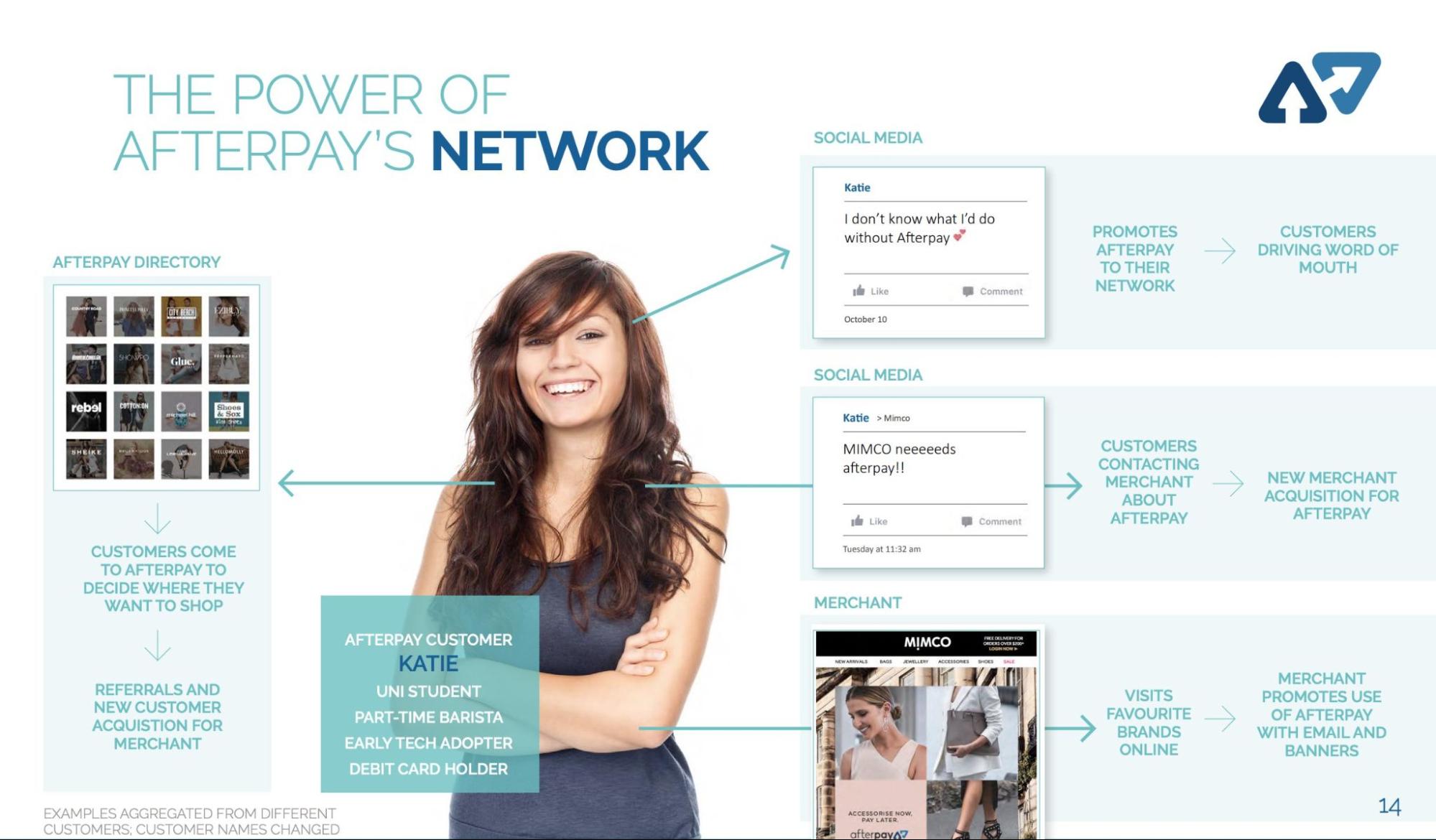
AfterPay wanted more than just brand recognition; they wanted to be recognized in line with traditional payment options. “Cash, Credit, or AfterPay?”
Beyond brand name recognition that AfterPay strived for, they took a note out of the Airbnb playbook and set up multiple location-based landing pages. I want to take a second to applaud these landing pages and the detail they’ve included to ensure proper personalization.
August screams “summer” for all of us in the Northern Hemisphere, but in Australia and the southern hemisphere, that’s not the case. This is reflected in the Australian brand and the copy included on the Australian homepage:

In Canada, we are caught up in the back to school rush, and this seasonal event is well reflected on the Canadian homepage:
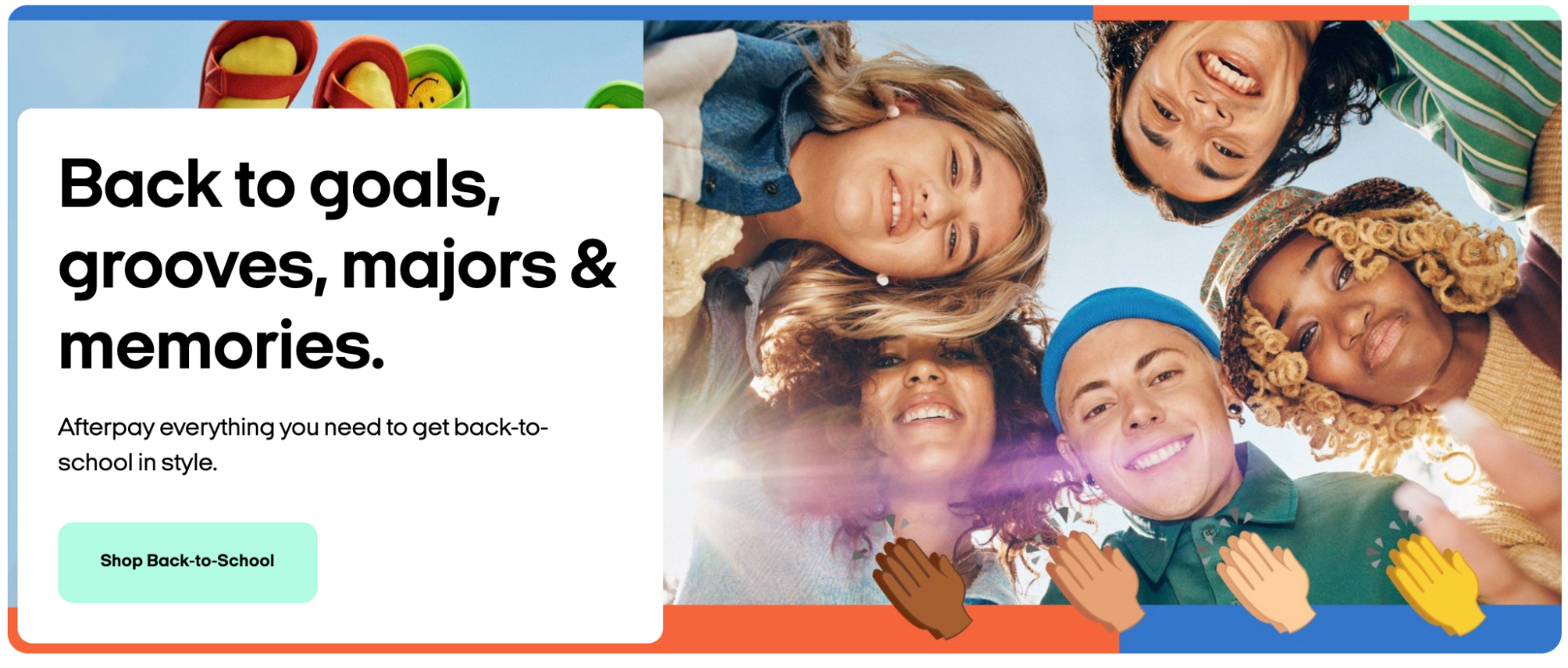
Focusing on brand recognition and opening the door for location-based search terms have propelled AfterPay and its merchants to continued success.
To continue breaking down the branding success of AfterPay, make sure to check out Ross’s Twitter thread.
Key Takeaways
- Brand name recognition can be one of the greatest competitive advantages.
- Creating templated landing pages is a great way to adapt and personalize pages for location-based search.
- Encouraging merchants and customers to talk about your company and advocate for new companies to sign on will turn users into ambassadors.
SaaSification of Subscription Services
It looks like consumer sites are taking a page from the SaaS playbook with tiered pricing offers within their subscriptions.
SaaS companies often use a multi-tiered pricing structure. Take a look at Shopify and how it offers three levels of pricing: a basic, a general, and an advanced tier, all increasing in cost and service offerings.
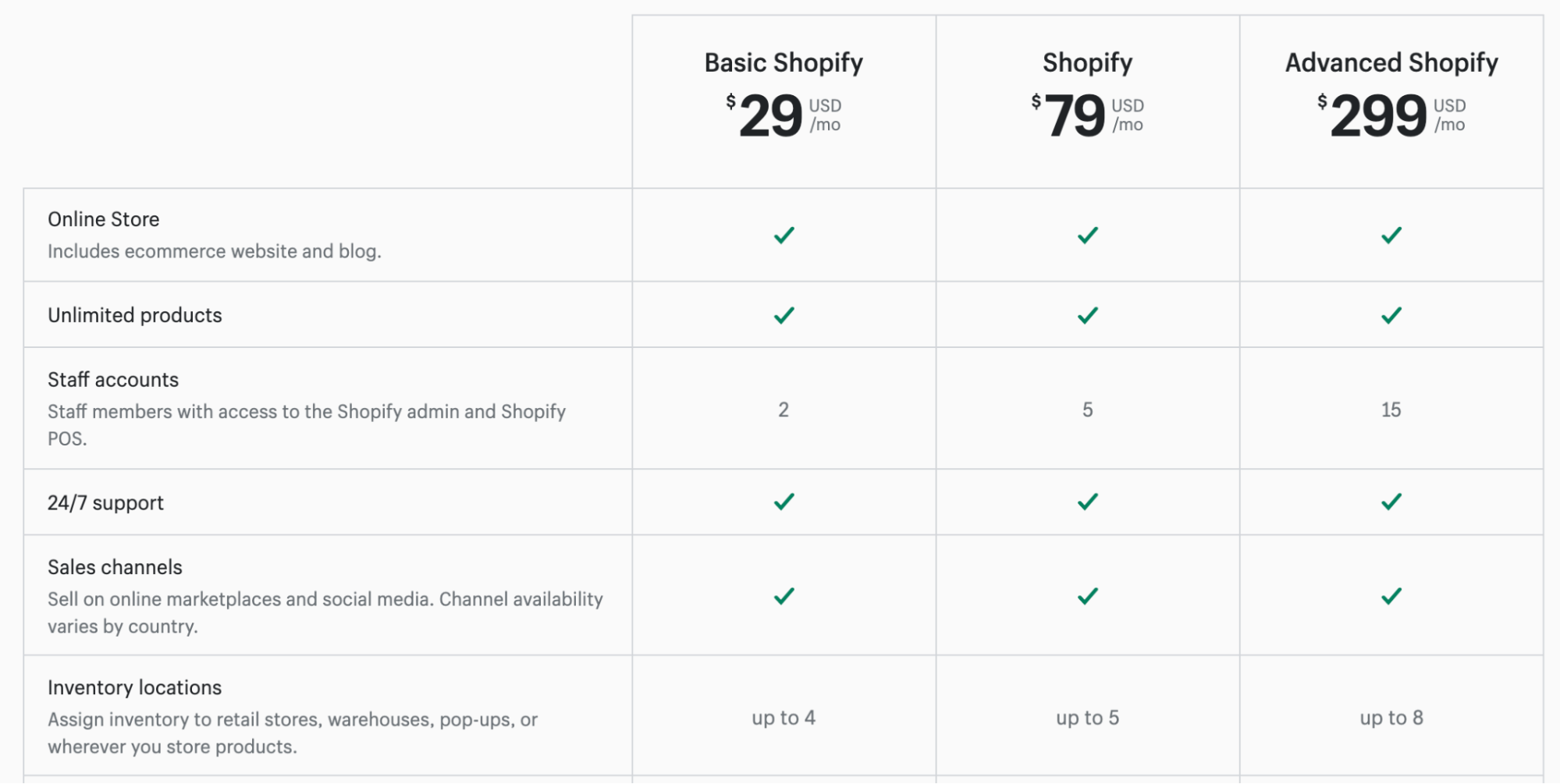
This way, it is up to the user to choose which tier they’d like to sign up for and which services are required for their team. For example, it wouldn’t make sense for a startup of two co-founders to purchase the general Shopify subscription, which includes five staff accounts.
However, as businesses grow and operations expand, it is simple to upgrade the subscription and have the SaaS service grow with you.
Tiered pricing can also allow for a trial of services before upgrading to a broader suite of services. Check out Dropbox’s pricing breakdown:
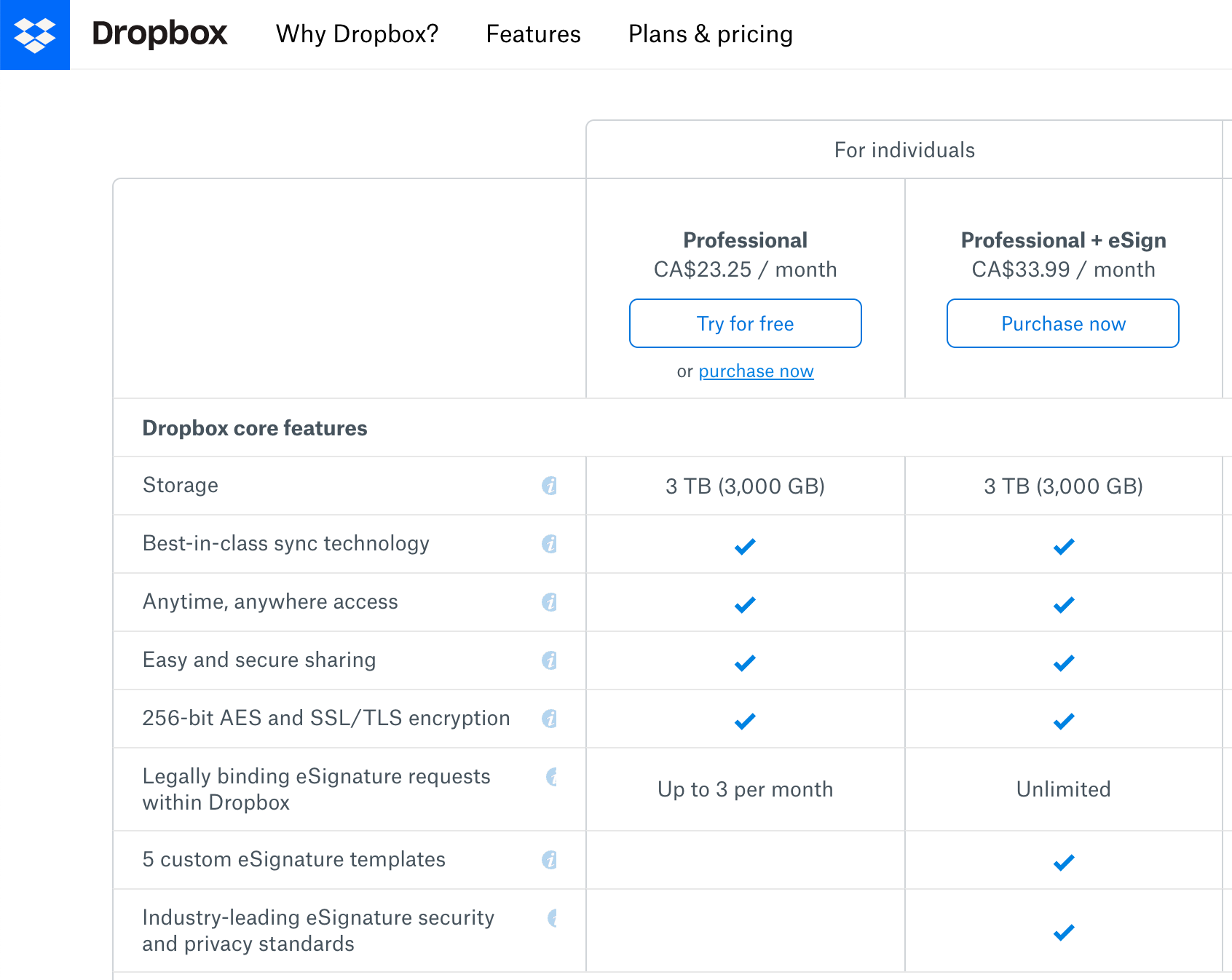
Notice how they offer two different suites, one that is simply Dropbox access and one that provides the additional eSign features?
The difference between SaaS subscriptions and the SaaSification of consumer subscription services is that the cost increases the more you remove on consumer platforms, rather than the SaaS features gained model.
This is something that YouTube and Spotify are opening their eyes to.
YouTube is trialling a cheaper ‘Premium Lite’ subscription that only removes ads. You don’t get the same access to the other premium features of offline downloads, YouTube Music or background playback. Netherlands, Finland and Sweden will be the trial sites for $8.32, which has been set to compete with the Netflix basic subscription of $9.50.
The goal here is to take back market share from Netflix. Ideally, YouTube viewers will start to spend more time streaming content, encouraging them to upgrade their subscription to access the full suite of premium services.
Spotify is following in the same subscription lite footsteps, but they’re offering premium features rather than removing ads. The basic free plan disallows users from picking specific songs, limits skips, and is supported by ad breaks. This less restrictive tier for $0.99/month removes the imposition on specific song choices and limited skips, but it will continue to be supported by ads.
The goals of this lite subscription are the same as YouTubes and any SaaS company. The main goal is to get users on your service at a cost that is justifiable by them. Once on board, they will begin to see the value in levelling up the subscription and accessing an expanded suite of premium services.
Key Takeaways
- Tiered subscription pricing allows your audience to pick the right plan and level up as needed.
- Whether offering additional premium features or removing undesired features like ads, there are ways to create attractive pricing tiers.
- B2B industries often look to B2C markets for inspiration, but this time B2C companies are taking note of the SaaS pricing scheme.
Get Your Head In The Clouds
The pandemic was a time of growth for many digital businesses, especially in the SaaS and ecommerce realm. But now, as we return to live outside, we are turning away from living life online from our couches.
During the past 18 months, investors were going crazy over SaaS and ecommerce startups and businesses; it was coined The Pandemic Effect. Think Zoom and how its market cap skyrocketed past $100B.
But now the craze is shifting focus to cloud infrastructure. In Q2 of 2021, the cloud infrastructure market grew to reach $42B!
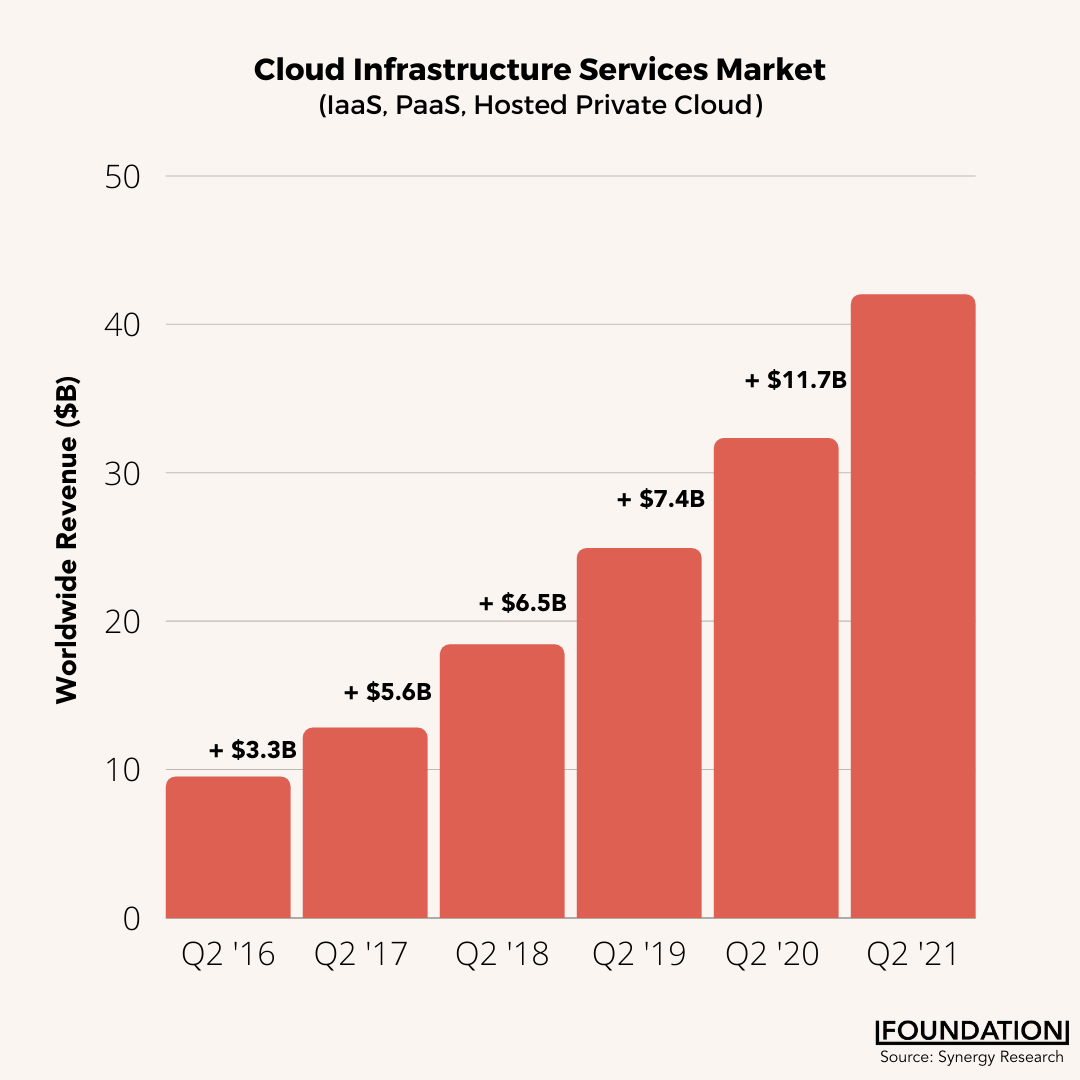
Seeing the cloud infrastructure continue to grow makes sense as we have our SaaS tools in place and continue to work remotely and in hybrid situations.
Companies are moving to adopt remote setups, and the need for connective technology solutions has taken off. As employers continue to consider the hybrid work model and remote work positions, the need for cloud infrastructure is constantly increasing.
Interestingly this is not simply a connectivity play. Companies are looking to cloud solutions to keep climate impact at a minimum as cloud vendors are working on using renewable energy sources to fuel their expansive data centers. Canalys analyst Blake Murray said it best:
“The best practices and technology utilized by these companies will filter to the rest of the industry, while customers will increasingly use cloud services to relieve some of their environmental responsibilities and meet sustainability goals”
Looks like the time is now to get your head out of the sand and into the clouds.
Key Takeaways
- Cloud infrastructure is the newest trend to emerge from the pandemic.
- Cloud infrastructure is increasing in popularity due to connecting remote teams with a climate-conscious focus.
- Moving away from growth in ecommerce and SaaS is a response to a decrease in demand for continual innovation.
OTHER NEWS OF THE WEEK:
💣 Zoom has blowing up in the best possible way, but a “Zoombombing” lawsuit has them in hot water. To settle this lawsuit, Zoom paid out an $85M settlement.
⚡ Bolt, an Uber rival, reached a $4.75B valuation following a recent $713M funding round.
🦄 Wu Jihan, the co-founder of Bitmain, has turned his second venture into crypto into a Unicorn. In just two years since its inception, Matrixport has reached a billion-dollar valuation.
BRAIN FOOD OF THE WEEK:
Days after raising $34M in March 2020, the tech startup Squire lost its entire customer base.
You may be scratching your head thinking how did a tech startup—of all businesses—suffer audience loss during the lockdown? Well, it has to do with that hair you’re scratching.
Squire is an app-based platform used to simplify the process of booking, paying, and finding a barbershop without damaging the therapeutic experience of getting a haircut.
In an attempt to maintain its audience and ensure they made it through to the other side, Squire pivoted and set up the site helpbarbershops.com. This site enabled barbershop owners to sell gift cards for future use, and it worked, with one shop making $30,000 in just a few days.
TWITTER THREAD OF THE WEEK:
Tips to Prelude Every Marketing Strategy by Sheeta Verma
WHAT WE’RE WIRED INTO THIS WEEK 🎧:
Bop City by Terror Jr (Best Track: Come First)
Originally sent out, by me Cali B, on Thursday, Aug 5, 2021.
Stay up to date with all of our latest findings by subscribing to our newsletter today. Signing up also gives you early access to Ross’ Tuesday essay full of exclusive industry insights.
Quick, do it now before the next drop!







